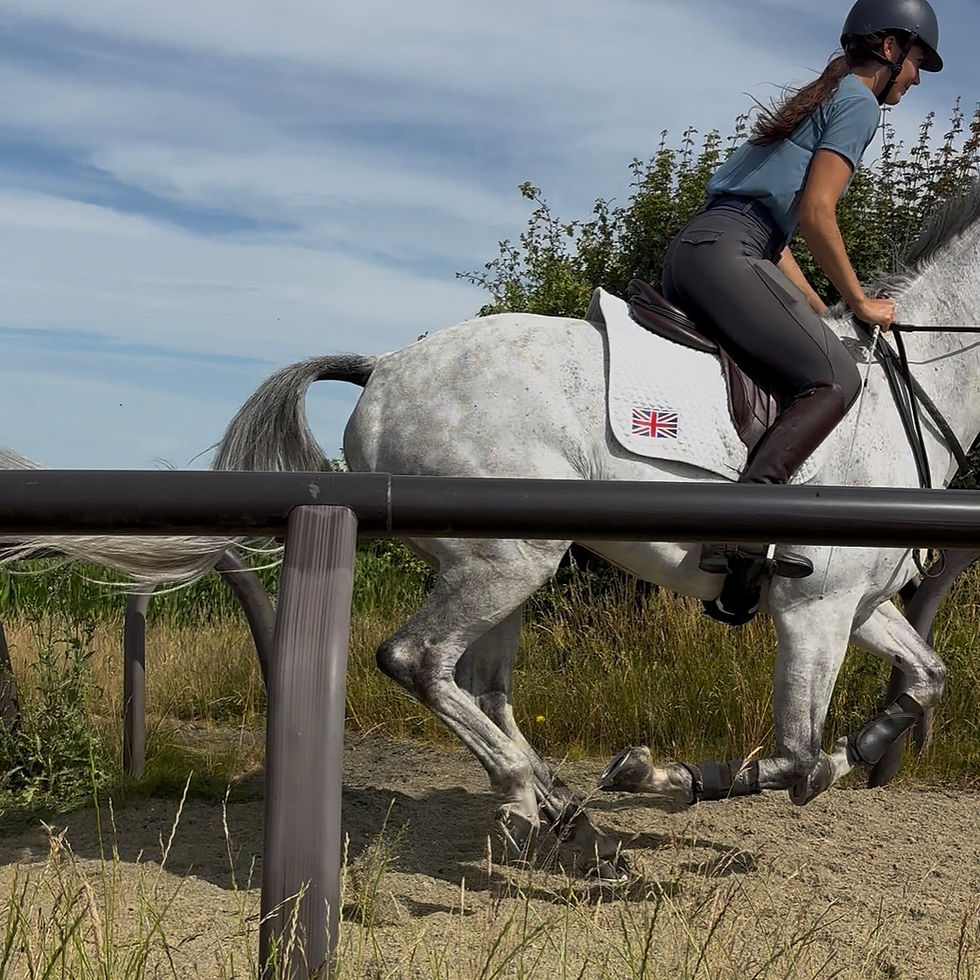The Long Road Back: Navigating the Difficulties of Equine Rehabilitation
- Award Equine Physio

- May 9
- 4 min read
The sigh as you watch your horse tentatively take another wobbly step during their rehab walk is one that many owners know all too well. The initial shock and worry of an injury are often followed by a period of hope and determination as you embark on the road to recovery. But let's be honest, the path of equine rehabilitation is rarely a smooth journey. It's more often a careful, sometimes frustrating, and emotionally taxing journey.
While the ultimate goal – a sound and happy horse – fuels our dedication, there can be significant hurdles during this challenging time. It's important that we acknowledge these difficulties, not to be disheartened, but to feel less alone and to better prepare for the realities of rehab.

Emotional rollercoaster:
Perhaps the most significant challenge is the emotional toll. The worry and anxiety that accompany an injury don't simply vanish once a diagnosis is made. Watching your once vibrant partner confined to a stable or moving with restricted gait can be heartbreaking. The impatience to see improvement clashes with the often glacial pace of healing. Setbacks can feel like a personal insult, and there’s the constant questioning if you’re doing enough, or doing it right.
Time commitment:
Rehabilitation is not a passive process, it takes a significant investment of time. From bandage changes and medication to endless rounds of hand-walking in all weathers, and rearranging everything around vet or physio appointments, the schedule can feel relentless. Juggling work, family life, and the demands of a recovering horse can lead to exhaustion and overwhelm. The spontaneity of your horsey life is replaced by a rigid routine dictated by the rehab plan.
Financial strain:
Veterinary bills for diagnosis and initial treatment can be substantial, and the costs often continue throughout the rehabilitation period. Ongoing therapy sessions, specialized equipment, and sometimes even management changes can add up quickly. The financial burden can create significant stress and force difficult decisions.
Frustration of slow progress:
Horses heal on their own timeline, and that timeline rarely aligns with our plans. The weeks and months can stretch out, with seemingly little visible improvement. This slow progress can be incredibly frustrating, especially when you're eager to see your horse back to their former glory. It requires immense patience and trust in the process, even when it feels like you're stuck in slow motion.
Isolation and lack of understanding:
While the equine community can be an amazingly supportive place, sometimes the individual challenges of your horse's injury and rehab can feel isolating. Friends with sound horses may not fully grasp the daily struggles and emotional weight you're carrying. You can end up so deep in the rabbit-hole of the specific condition your horse is facing that every conversation feels dictated by it.
Top tips for navigating the rehab journey successfully:
Plan ahead: it can be very hard to plan, but ask your vet and physio what the general expectation is for the overall timeline, is it 3 months or 12? How long is box rest likely to last, worst case and best case scenario? For financial planning as well as your time and expectations, having a rough idea of what could come up in the future will be helpful either way.
Discuss your limitations with your physio: we all have non-negotiables in our lives, whether that’s due to your facilities at home, or the time of the school run each day, tell your physio what the non-movables are in your life, and they will help develop a rehab plan that’s actually achievable. If walking in-hand for hours on end is sending your horse up the wall then there’s no point suggesting it - but we can’t alter these things or offer alternatives unless we know!
Talk to your professionals: whether it’s your physio, coach, vet, yard owner or other professional, we do really care about you and your horse. We want to know how you’re doing, and we want to help you achieve it. While you may not be having lessons or getting out and about competing, consider what else would be useful for this time to give you something to look forward to. Whether it’s an in-hand polework clinic or lending a hand with someone else, get creative about the ways that you can find some highlights to your week, your professionals want you to succeed as much as you do!
Find a community: whether it’s online, or in person, finding a community of other people who are also rehabbing their horses can be a lifeline to an otherwise isolating process. Even just being able to bond over the challenges or share top tips can make such a difference.
Celebrate the small things: it doesn’t matter how silly it might seem to some people, the fact that your horse just got to go out in a paddock this week for the first time in months, is a milestone worth celebrating. So is the day that they could first be sat on again, or the day they came home after surgery. Just because the journey’s not finished, doesn’t mean you can’t celebrate what you’ve achieved so far.
The journey of rehab can be a long one, but it’s a testament to the deep bond we share with our horses. It requires resilience, patience, and unwavering dedication. By acknowledging the difficulties, seeking support, and focusing on the ultimate goal, we can navigate the long road back and hopefully emerge with a sounder horse and a stronger partnership.




Comments